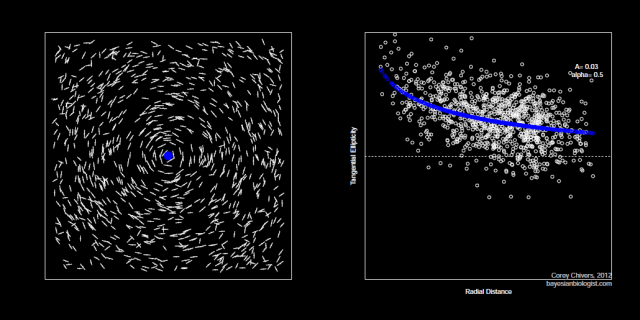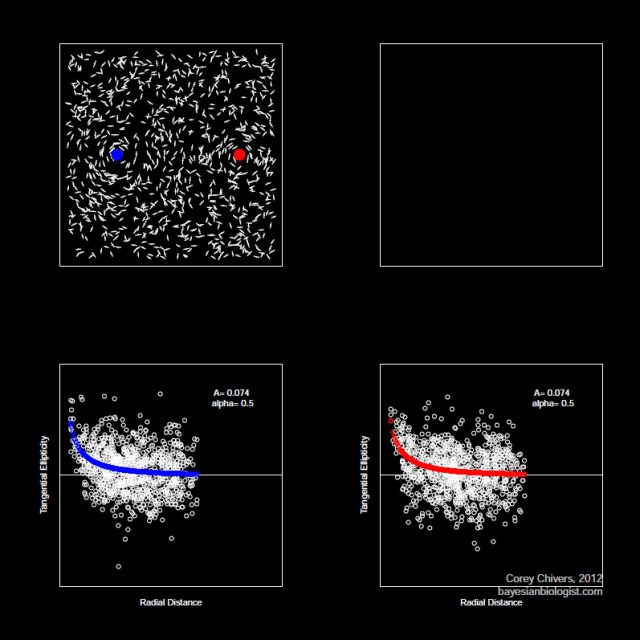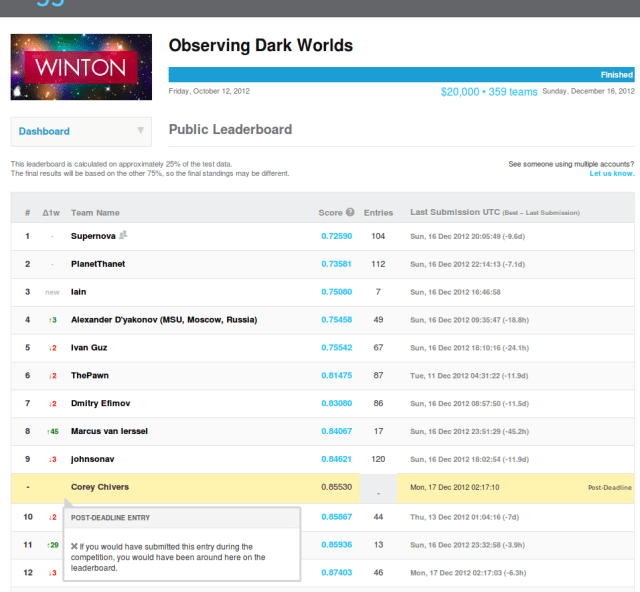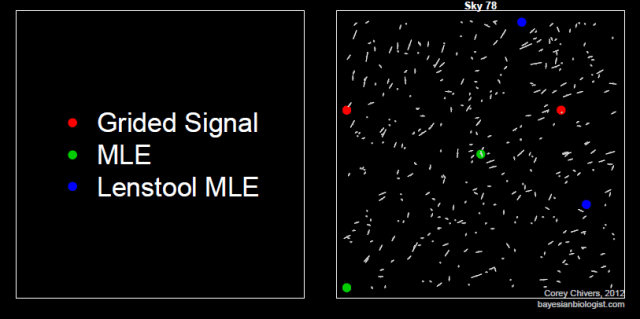In the search for dark matter, I have been having mixed success. It seems that locating DM in single halo skies is a fairly straightforward problem. However, when there are more than one halo, things get quite a bit trickier.
As I have advocated many times before, including here and here, simulation can provide deep insights into many (if not all) problems. I never trust my own understanding of a complicated problem until I have simulated from a hypothesized model of that problem. Once I have a simulation in place, I can then test out all kinds of hypotheses about the system by manipulating the component parts. I think of this process as a kind of computer-assisted set of thought experiments.
So, when I was hitting a wall with the dark matter challenge, I of course turned to simulation for insights. Normally this would have been my very first step, however in this case my level of understanding of the physics involved was insufficient when I started out. After having done a bit of reading on the topic, I built a model which implements a weak lensing regime on an otherwise random background of galaxies. The model assumes an Einasto profile of dark matter mass density, with parameters A and α determining the strength of the tangential shearing caused by foreground dark matter.

A=0.2, alpha=0.5
I can then increase the strength of the lens by either increasing the mass of the dark matter, or by varying the parameters of the Einasto profile.

A=0.059, alpha=0.5

A=0.03, alpha=0.5
You can check out this visualization over a range of A values.
I can also see how two halos interact in terms of the induced tangential ellipticity profile by simulating two halos and then moving them closer to one another.

You can see the effect here. You get the idea – I can also try out any combination of configurations, shapes, and strengths of interacting halos. I can then analyse the characteristics of the resulting observable factors (in this case, galaxy location and ellipticities) in order to build better a predictive model.
Unfortunately, since this is a competition with cold hard cash on the line, I am not releasing the source for this simulation at this time. I will, however, open source the whole thing when the competition ends.








